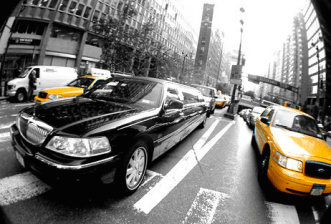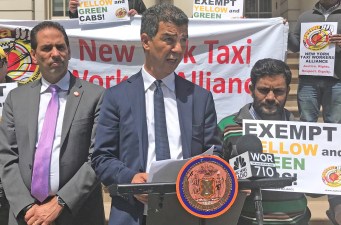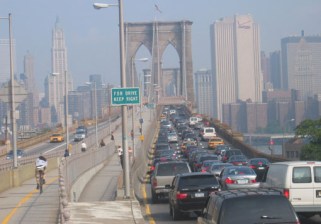Uber Should Pay an MTA Fee Like Yellow Cabs, But the Fee Should Be Smarter
One of the points of debate over Uber’s operations in New York is whether its trips should contribute the same 50-cent surcharge to the MTA that yellow and green taxis do. It’s an easy question to answer in some ways: It doesn’t matter whether a car is yellow, green, or black — if some for-hire vehicles have to pay an MTA fee, they all should. But as long as this taxi surcharge is in the public eye, there’s also an opportunity to rethink the fee itself and make it smarter.

Ideally, the surcharge paid by yellow taxis, Uber, and other for-hire services would be higher in the congested Manhattan core than in outer-borough neighborhoods lacking decent transit service. While that wouldn’t be a substitute for real congestion pricing of all motor vehicle trips, it could set a precedent and demonstrate the impact of congestion-based fees on a substantial portion of Manhattan traffic.
Here’s the way things are set up today: A 50-cent surcharge on all green and yellow taxi trips will generate an estimated $87 million for the MTA this year, according to the Citizens Budget Commission. Black cars, including Uber and Lyft, are subject to a sales tax that isn’t paid by metered taxis. A sliver of that — slightly more than one-third of one percent — will generate an estimated $7 million for the MTA this year.
Because of this imbalance, Uber’s growth is poised to eat into MTA funding. CBC projects the MTA will actually lose revenue as Uber trips grow and taxi trips continue to decline.
Mayor Bill de Blasio spoke about the problem on WNYC’s Brian Lehrer Show last week. “We also have to support the MTA, which is in the interest of all of us, and that happens right now through a certain number of taxis, but it doesn’t happen through Uber, for example,” he said.
The fee could also be restructured in a way that addresses problems beyond the MTA’s coffers.
As Uber and competitors reshape the industry, the number of for-hire cars is growing. New York now has 8.5 taxis, liveries and black cars per 1,000 residents, up from 6.2 in 2011, according to CBC. Most of those vehicles concentrate in the Manhattan core, contributing to car congestion in the most traffic-choked parts of the city.
In the wake of his bruising battle with Uber, de Blasio said the city is developing a “new deal” that will “rationalize the whole picture” of taxi and for-hire vehicle regulation. “There are real challenges that are not being addressed: congestion issues, pollution issues, revenue issues,” the mayor said.
The city sorely needs a total reset of its taxi and livery regulations. A smart approach to the MTA fee should be part of that.
There should be an even playing field between the different types of for-hire vehicles, but applying the 50-cent MTA fee to all trips is a blunt tool that simply raises costs for people who are getting around without using a private car.
Some of those people have no decent subway or bus options for their for-hire trips, but an Uber ride from Midtown to Wall Street has plenty of transit alternatives. These types of trips should be paying much more than 50 cents into the MTA’s coffers.
It wouldn’t be too hard to charge extra for car trips in the Manhattan central business district. The Taxi and Limousine Commission tracks where taxi and black car trips originate, and it also knows where taxi trips end. Trips starting or ending in the Manhattan core — a huge chunk of for-hire journeys — could be subject to a higher MTA fee, while outer-borough trips would get a break.
It’s like a smaller-scale version of congestion pricing or the Move NY toll plan, applied only to for-hire trips. Of course, this would be no substitute for a complete toll reform plan, which would have much greater power to cut traffic and raise revenue for transit. But it could be a stepping stone toward that.
The city has the power to set taxi rates, but a surcharge requires state action, just as it did when the 50-cent fee was created in 2009. So any changes to the taxi fee would require sign-off from Albany — and Governor Andrew Cuomo. That will be the case if the city tries simply to extend the current charge to all for-hire trips, or if it goes for a smarter way to structure the fee.



